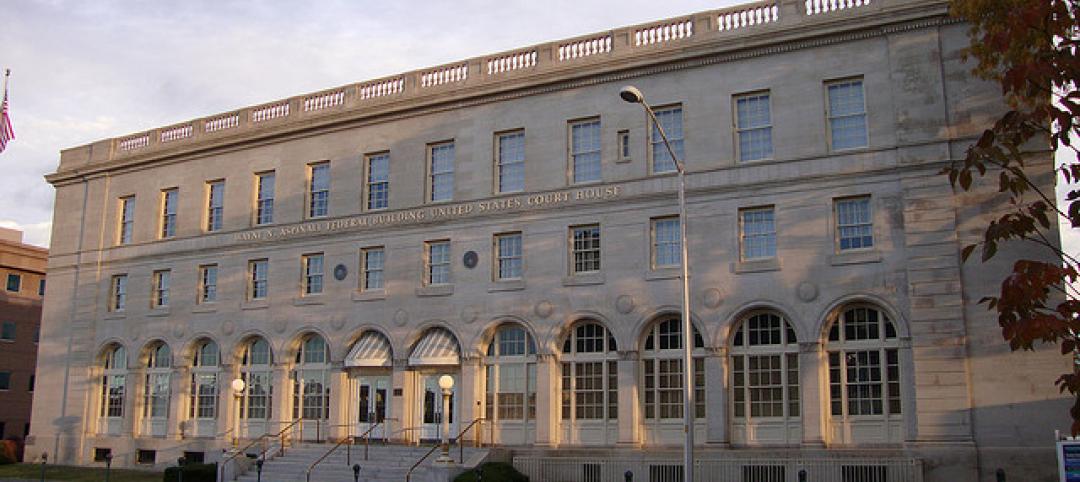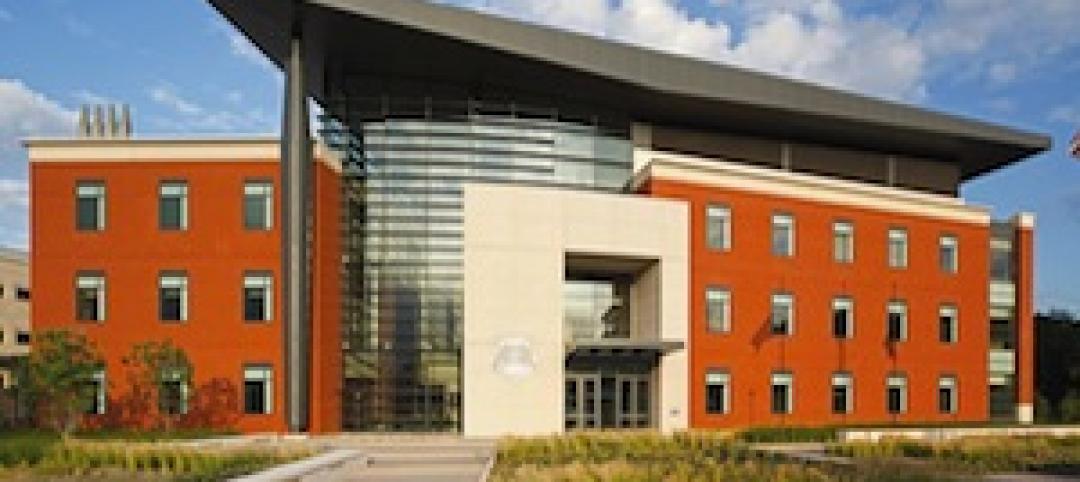
After more than a century without a substantial renovation, Old Suffolk County Courthouse, designed in Neo-Classical style by Boston's first city architect, George Clough, was overdue for a facelift.
 |
| Smothered by decades of coal dust, smoke, and pollutants, the ornate, gilded ceiling of the Great Hall at Boston’s Old Suffolk County Courthouse was carefully restored in a $117 million renovation. The courthouse was renamed John Adams Courthouse following the 43-month project. PHOTO: JONATHAN HILLYER PHOTOGRAPHY |
Enter the makeover team: Boston-based architects Childs, Bertman, Tseckares and general contractors Suffolk Construction/NER Construction Management. Their patient: a courthouse built between 1886 and 1894 and nowhere close to being ADA-compliant, too small to handle the needs of the Massachusetts High Courts, and sporting woefully out-of-date electrical, HVAC, and communications systems.
The team's efforts focused heavily on preservation and restoration because the courthouse was listed on the state and national historic registers, which meant that simple matters had to be addressed in smarter ways. After more than 100 years, its space needs had changed, not only for its judicial function, but also to accommodate security systems and automobile parking. Ordinarily, the solution would have been to loosen the girdle and letting the building expand. But here, the team had to find a way to add square feet within the parameters of the courthouse's original footprint—effectively plumping up the building while still managing to fit it into last season's pants.
To accomplish that goal, the Building Team headed for the light wells. Outdated since the advent of modern lighting systems, parts of the courthouse's two largest wells were converted into 50,000 square feet of usable space for the Massachusetts Supreme Judicial Court and the state Social Law Library.
Meanwhile, new underground parking was inserted into the building's lowest level, giving the state's highest judicial members direct access from their cars to their chambers. The team also moved most major court functions to the second and third floors and reorganized the entry level to celebrate the Great Hall, a soaring four-story public space.
The Great Hall was also a major focus of the team's renovation efforts. Architectural details that were smothered by decades of coal dust, smoke, and pollutants were cleaned inch by inch, as was the decorative ceiling with its intricate, gilded floral abstract pattern bordered by arches and columns decorated with rosettes, egg and dart borders, and classical figures cast in plaster. Damaged areas were infill-painted using reversible materials, saving as much of the original art as possible.
Courtrooms were also heavily renovated. Drop ceilings from the 1960s were removed to reveal original plaster moldings. For the wall and woodwork restoration, the team turned to old photographs that documented original vibrant paint schemes, Victorian stencil work, and light-colored, lustrous wood finish. Modern, efficient versions of historic lamps and lighting fixtures completed the transformation.
When the dust settled and the nipping and tucking was finished, the now-344,285-sf courthouse was so transformed that officials decided it needed a new name. The Old Suffolk County Courthouse was reborn as the John Adams Courthouse.
Related Stories
| Sep 24, 2013
8 grand green roofs (and walls)
A dramatic interior green wall at Drexel University and a massive, 4.4-acre vegetated roof at the Kauffman Performing Arts Center in Kansas City are among the projects honored in the 2013 Green Roof and Wall Awards of Excellence.
| Sep 19, 2013
What we can learn from the world’s greenest buildings
Renowned green building author, Jerry Yudelson, offers five valuable lessons for designers, contractors, and building owners, based on a study of 55 high-performance projects from around the world.
| Sep 19, 2013
6 emerging energy-management glazing technologies
Phase-change materials, electrochromic glass, and building-integrated PVs are among the breakthrough glazing technologies that are taking energy performance to a new level.
| Sep 19, 2013
Roof renovation tips: Making the choice between overlayment and tear-off
When embarking upon a roofing renovation project, one of the first decisions for the Building Team is whether to tear off and replace the existing roof or to overlay the new roof right on top of the old one. Roofing experts offer guidance on making this assessment.
| Sep 11, 2013
BUILDINGChicago eShow Daily – Day 3 coverage
Day 3 coverage of the BUILDINGChicago/Greening the Heartland conference and expo, taking place this week at the Holiday Inn Chicago Mart Plaza.
| Sep 10, 2013
BUILDINGChicago eShow Daily – Day 2 coverage
The BD+C editorial team brings you this real-time coverage of day 2 of the BUILDINGChicago/Greening the Heartland conference and expo taking place this week at the Holiday Inn Chicago Mart Plaza.
| Sep 3, 2013
Grand Junction, Colo., courthouse aims to be first net-zero building on National Register of Historic Places
After a two year renovation, the 95-year oldWayne S. Aspinall Federal Building and Courthouse in Grand Junction, Colo., is being evaluated for LEED Platinum status and may become the National Register of Historic Places’ first net-zero-energy building.
| Aug 30, 2013
Local Government Report [2013 Giants 300 Report]
Building Design+Construction's rankings of the nation's largest local government design and construction firms, as reported in the 2013 Giants 300 Report.
| Aug 30, 2013
State Government Report [2013 Giants 300 Report]
Stantec, Jacobs, PCL Construction among nation's top state government design and construction firms, according to BD+C's 2013 Giants 300 Report.
| Aug 29, 2013
Is it possible to build a LEED Gold prison?
Why yes, of course it is. Correctional design exerts from Shive-Hattery and the Iowa Department of Corrections will demonstrate how at the upcoming BUILDINGChicago conference and expo, September 9-11 at the Holiday Inn Chicago Mart Plaza.
















